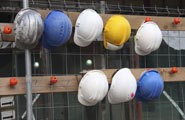Asbestos
01/03/17: Contractor fined for poor asbestos assessment
Further information
Chemical/ Substance Exposure
27/02/17: Boat builders fined after worker suffers burns
Further information
Demolition
15/03/17: Construction worker seriously injured in wall collapse
Further information
Electricity
08/03/17: £600,000 fine for Council contractor after major burns to employer
Further information
Electricity – underground cables
Falling Objects
06/03/17: £300k fine for concrete firm after employee has leg amputated
Further information
Roofwork/ Working at height
20/03/17: Partnership fined following death of long-serving farm manager
14/03/17: Construction firm fined after worker fell from height
07/03/17: Construction company fined after worker fell from height
06/03/17: Company and self employed contractor sentenced for lift shaft death
28/02/17: Balfour Beatty fined for safety failings
24/02/17: Oldham building contractor in court over fall from height risk
22/02/17: London construction firm fined after workers injured
22/02/17: Estate agents fined after member of the public fell down a well






